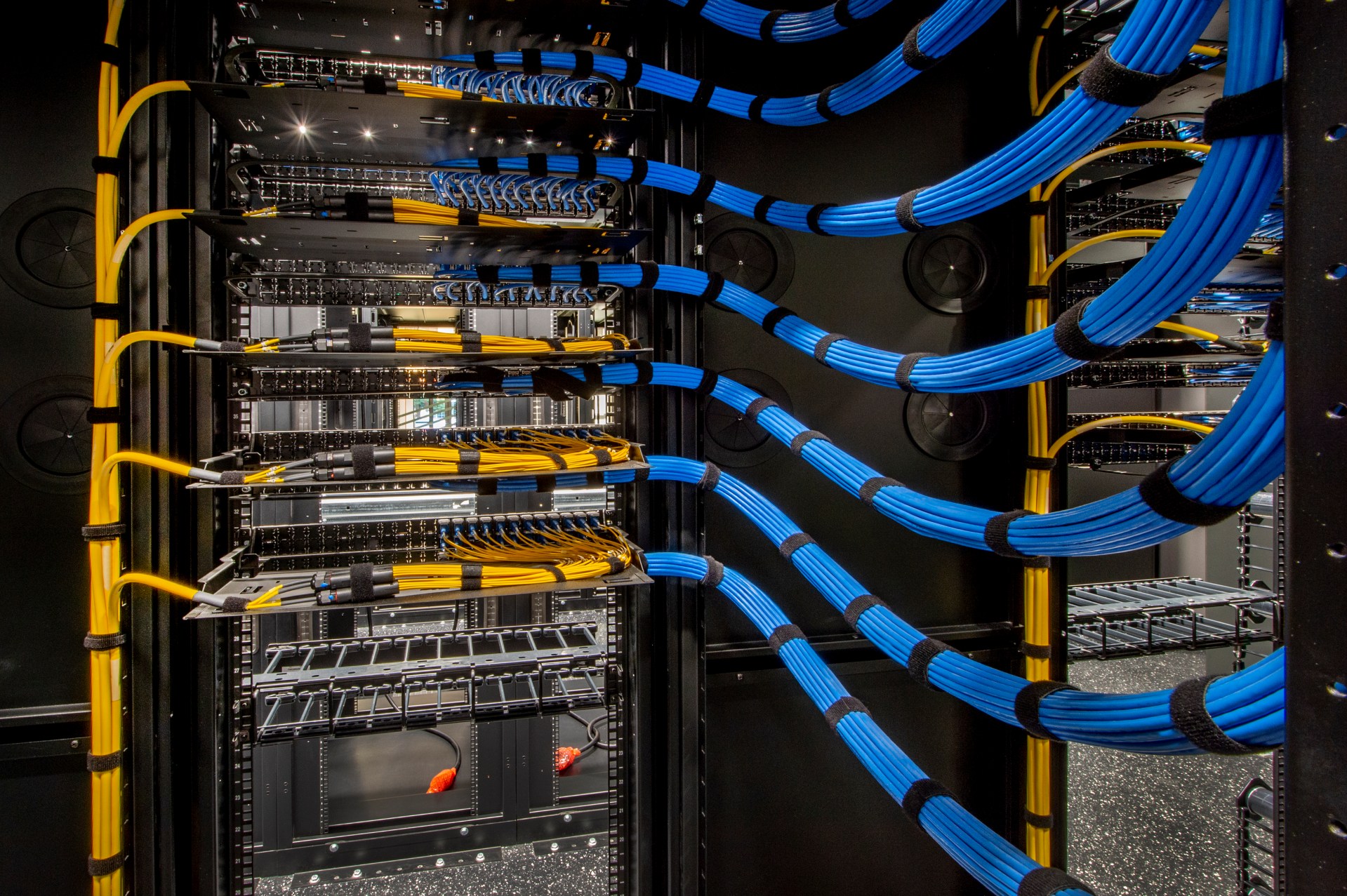Connectivity is usually a major consideration at colocation facilities. High-quality colocation vendors will be sure to support a variety of connection methods, both cabled and wireless. Here is a quick guide to the main ones.
Cabled connection methods at colocation facilities
Here are the two main cabled connection methods commonly in use at colocation facilities.
Ethernet
Although Ethernet technology is being supplanted by fiber optics, at present it still forms the backbone of data center operations. Ethernet comes in various specifications. Currently, the most common ones are Standard Ethernet, 10 Gigabit Ethernet, and 40/100 Gigabit Ethernet.
Standard Ethernet: This provides reliable connectivity for basic data transfer
10 Gigabit Ethernet: This offers increased speed for more demanding applications.
40/100 Gigabit Ethernet: This is designed for ultra-high-speed data transmission for the most demanding applications such as real-time online services (e.g. video calling).
Understanding and leveraging the nuances of different Ethernet options allows businesses to tailor their network infrastructure based on specific needs. It is therefore extremely useful (if not crucial) for optimizing network performance in colocation environments.
Fiber optic
The adoption of fiber optic connections is driven by their immunity to electromagnetic interference, low latency, and substantial bandwidth capabilities. These attributes make fiber optics the go-to choice for demanding applications in colocation environments. Currently, there are two main kinds of fiber optic connection methods in common use.
Single-mode fiber: This allows a single mode of light to travel long distances with minimal signal degradation. It is generally used for high-speed, long-distance transmissions such as interconnections between colocation facilities run by the same vendor.
Multi-mode fiber: This allows multiple light modes to travel simultaneously. It is generally used for high-bandwidth, short-distance transmissions such as connecting servers and network switches within the same colocation facility.
Fibre optic networks can use Ethernet protocols but it is generally better to implement them with the Fiber Channel protocol. This is a specialized fiber optic protocol that facilitates high-speed and low-latency data transfer. Colocation facilities routinely use Fiber Channel protocol to maximize the performance of their storage area networks (SANs).
Fiber optics is steadily replacing Ethernet as the connection method of choice in colocation facilities. It is more expensive but it provides much faster speeds, lower latency, wider bandwidth, and improved reliability. It is therefore much better suited to the increasing demands of modern online applications and the growing volume of people who use them.
Wireless connection methods at colocation facilities
Here are the two main wireless connection methods commonly in use at colocation facilities.
Wi-Fi
WiFi is widely utilized in colocation facilities as it provides a flexible and mobile networking solution for short-distance communication. The Wi-Fi connection method operates on radiofrequency signals and uses the IEEE 802.11 standards. Currently, the two most common Wi-Fi connectivity methods are the 2.4 GHz and 5 GHz frequency bands.
The 2.4 GHz band offers better penetration through obstacles and wider coverage. It is, however, vulnerable to interference from other devices and has lower data rates. The 5 GHz band is less good at penetrating obstacles and has more limited coverage. It is, however, less vulnerable to interference from other devices and has higher data rates.
Colocation facilities often deploy dual-band or tri-band Wi-Fi solutions to balance coverage and performance. (Tri-band Wi-Fi solutions introduce an additional 5 GHz band). They secure these connection methods with robust encryption protocols specifically designed for Wi-Fi (e.g. WPA3 (Wi-Fi Protected Access 3)).
The speed of Wi-Fi does not compare to the speed of cabled alternatives. It can, however, be significantly improved by the use of networking technologies such as beamforming and MU-MIMO (Multi-User, Multiple Input, Multiple Output). This means it can achieve the sort of performance levels required for common applications such as powering internet of things (IoT) systems.
5G
The best way to describe 5G is to say that it is the wireless equivalent of fiber-optic technology. Just like fiber-optic technology, it delivers unprecedented improvements in speed, latency, bandwidth, and reliability. Moreover, 5G supports network slicing. This enables colocation providers to create multiple virtual networks, each optimized for specific use cases.
As with fiber-optic technology and Ethernet, 5G looks set to replace not just 4G but potentially Wi-Fi as well (at least to a large extent). Deploying 5G in colocation facilities is often both expensive and disruptive. These inconveniences can, however, be more than justified by the benefits it delivers and the opportunities it creates.
In particular, 5G is a natural partner for Edge computing, which in turn is a natural partner for the internet of things (IoT). The IoT looks set to be one of the biggest growth areas in IT, at least for the foreseeable future. It is therefore vital that colocation facilities consider it when choosing which connection methods to support.




